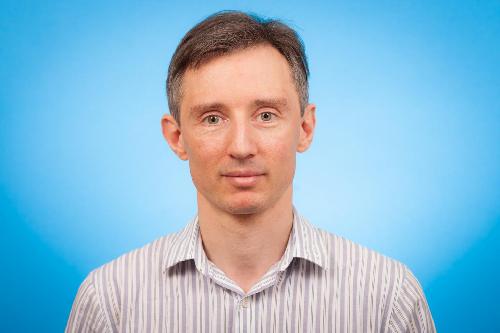TORONTO, April 11, 2016--More male babies than expected are born to Indian-born women living in Canada who already have two or more children, according to a study published today in the journal CMAJ Open.
This gender imbalance has existed for at least two decades and can be seen across Canada, said lead author Dr. Marcelo Urquia of St. Michael's Hospital.
The study, which used Statistics Canada data, highlights the "magnitude of the skewed sex ratios" among Indian immigrants but does not explain why this imbalance exists, said Dr. Urquia, an epidemiologist in the hospital's Centre for Research on Inner city Health.
 More male babies than expected are born to Indian-born women living in Canada who already have two or more children, according to new research by Dr. Marcelo Urquia of St. Michael's Hospital. Credit: Courtesy of St. Michael's Hospital
More male babies than expected are born to Indian-born women living in Canada who already have two or more children, according to new research by Dr. Marcelo Urquia of St. Michael's Hospital. Credit: Courtesy of St. Michael's Hospital
However, a separate paper by Dr. Urquia published today in the Canadian Medical Association Journal found that more boys were born to Indian-born women living in the province of Ontario if they already had two girls. The sex ratio increased significantly if they had one abortion prior to their third birth, if they had more than one abortion, and if they had an abortion after 14 weeks gestation when the sex of the fetus can accurately be determined by an ultrasound.
Dr. Urquia said these factors likely explained the gender imbalance in the rest of Canada as well.
In most of the world, between 103 and 107 boys are born for every 100 girls.
Canadian-born women living in Canada gave birth to about 105 boys for every 100 girls, Dr. Urquia's paper found.
But women born in India, who already have two children, gave birth to 138 baby boys in Canada for every 100 girls. If they already have three children, they give birth to 166 boys for every 100 girls.
Couples involving at least one Indian-born parent gave birth to more boys than girls in second and later births, principally when the father was born in India.
Dr. Urquia said this was the first paper to examine both the mother and father's country of origin when examining sex ratios.
His national study examined birth certificate data of 5.8 million births to Canadian-born women and 177,990 Indian-born women between 1990 and 2011. The data is provided by provincial Vital Statistics Registrars to the Canadian Vital Statistics Birth Database administered by Statistics Canada.
In Ontario, data housed by the Institute for Clinical Evaluative Sciences also showed sex rations among babies of Canadian-born women were within the expected range.
However, women born in India who already had two daughters then give birth to 196 boys for every 100 girls.
- The sex ratio rises to 326 boys for every 100 girls if the Indian-born mother with two daughters had an abortion preceding the third birth.
- It rises to 409 boys for every 100 girls if the mother had more than one abortion.
- And it rises again to 663 boys for every 100 girls if the mother had at least one abortion after 14 weeks of gestation when the sex of the fetus can be accurately estimated by ultrasound.
The CMAJ study examined 1.2 million births to women with up to three live births between 1993 and 2012 in Ontario, where abortions are both legal and free. Records of live births and abortions were linked to Canadian immigration records.
Dr. Urquia said the data used in his studies did not indicate how long Indian immigrants had lived in Canada and whether that impacted the sex ratio. Nor did it indicate country of origin of the babies' grandparents, meaning some of the Canadian-born mothers may have been second-generation immigrants.
"We conservatively estimated that 4,472 girls of Indian immigrants to Canada were unaccounted for over the last two decades, largely among couples of two Indian-born parents but also among couples that have one Canadian-born parent," Dr. Urquia said.
The Ontario study also found a slight imbalance in the number of boys born to Chinese-born women living in Canada, but it was not tied to abortion and seemed to be more about family balancing.
source: St. Michael's Hospital